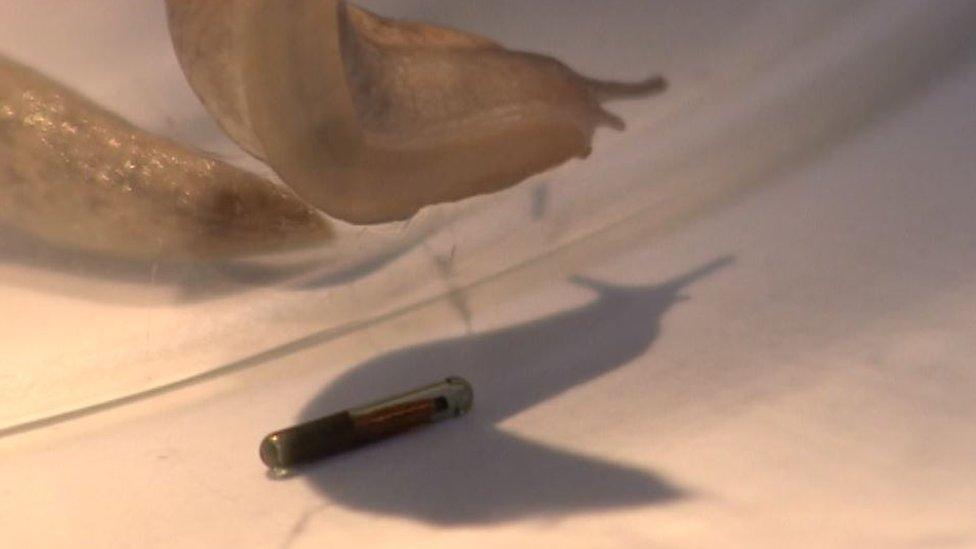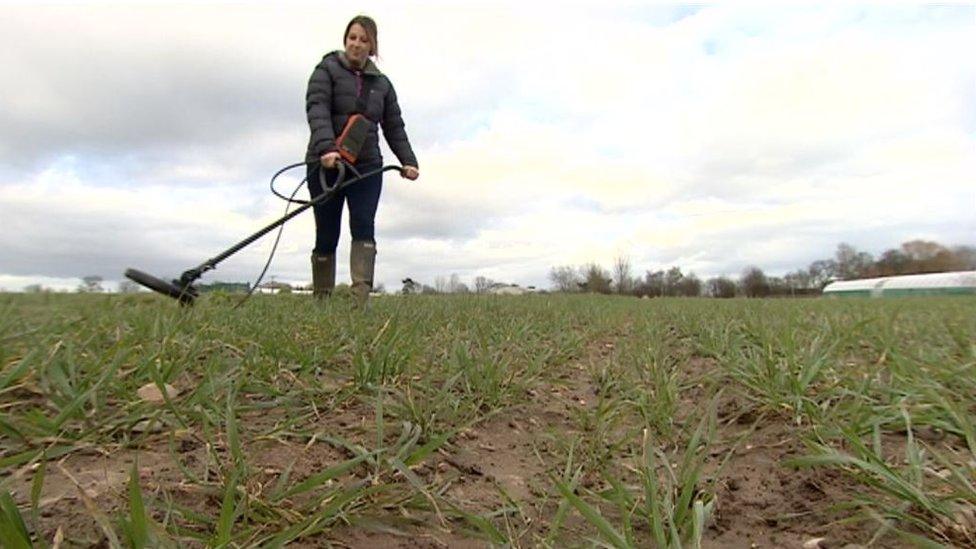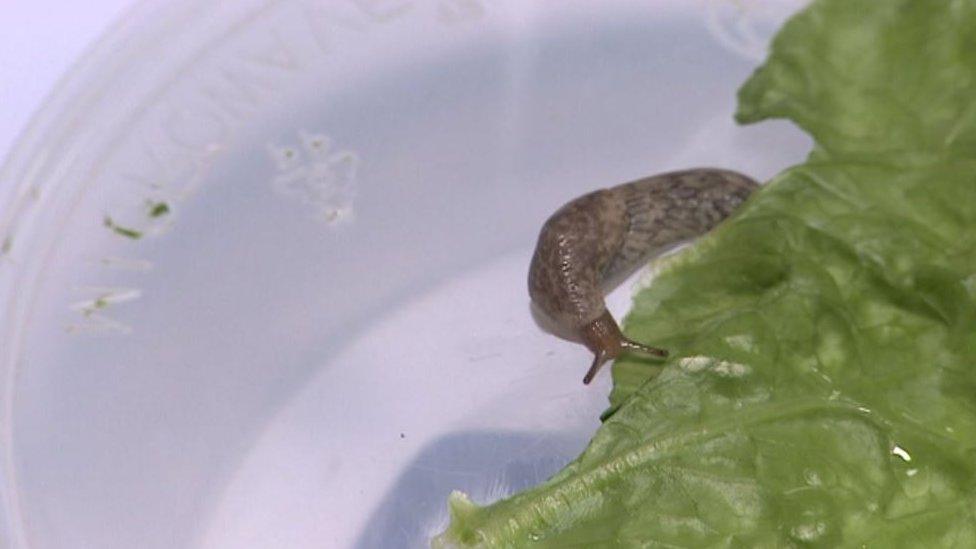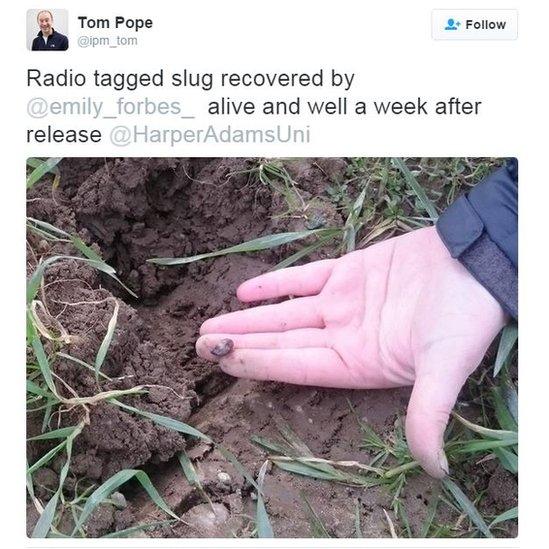Fitting slugs with tracking devices for the first time
- Published

Two slugs keep a close eye on a tracking device
At Harper Adams University they are fitting tracking devices to slugs.
The aim is to learn more about the behaviour of a species that experts say could cause millions of pounds of damage to crops if left untreated.
Usually, if you want to study an animal, you do a survey and count it.
The problem with slugs is you can't always see them as they spend much of their time out of sight in the top 10cm (4in) of the ground.
But improved tracking technology will allow scientists to accurately follow slug movements for the first time.

Slug-detectoring: Researcher Emily Forbes uses a detector to find slugs with trackers inside them in the field
The aim of the research is to answer an interesting problem facing farmers: how do slugs live amongst their crops?
The researchers at Harper Adams University have a theory slugs are not evenly distributed over a field.
Instead they believe they are concentrated in patches.
That's important because if the scientists could help farmers find these large patches of slugs you could target them, external with pest control measures. That would be cheaper and greener than spreading chemicals over an entire field.
Slug-detectorists
Slugs are slimy and enjoy squeezing into tight spaces so the trackers need to be placed inside the slugs themselves just under the skin.

Relaxing before being released into a field
The slugs are anaesthetised before a small cut is made in the skin and the tracker inserted. The tracker itself is smaller than a grain of rice.
The slugs I saw were implanted a month ago and seemed happy.
It's important to the researchers that the trackers don't cause the slugs to behave any differently to their non-implanted cousins. In the lab it appears neither slug movement or appetite is affected.
Tracking the slugs involves equipment that looks very like a metal detector. Researchers will go out at night when the slugs are most active and release the slugs with the trackers. There will be hundreds of them over the duration of the experiment.
Then every 20 minutes throughout the night the team will scan the fields with the detector. This will automatically log the slug's individual tracker number and it's GPS location building up a very accurate map of where the slugs go and what they are doing.
Lost. One slug.
There's increasing pressure on farmers to reduce the chemicals they use against slugs and some are being banned outright. So if this research comes up with a better way to control them by revealing more about their behaviour it could be very useful.
Funding for this study has come from the Agriculture and Horticulture Development Board (AHDB), external, The Potato Council, external and Cereals and Oilseeds, external who estimate that slugs could cause £100m of damage, external to UK crops if they aren't properly controlled.
And finally a confession.
We did take a slug out into the field and we put it down on the ground to track it. We certainly managed to find it again, the signal from its tracker was loud and strong, but we couldn't actually see it. Which means we couldn't recover the slug and he had to go and join his colleagues in the soil. It did rather show how trackers beat traditional visual slug surveys.
And soon our slug implanted with a tracker will be joined by hundreds more.
Update: One week on and our slug was safely recovered by the team.
